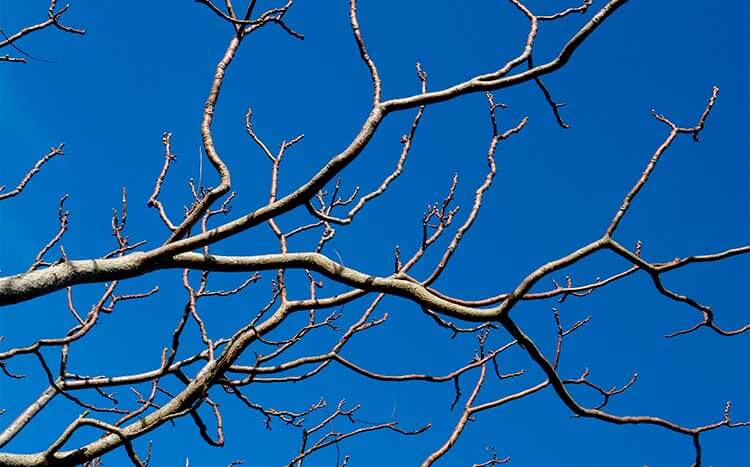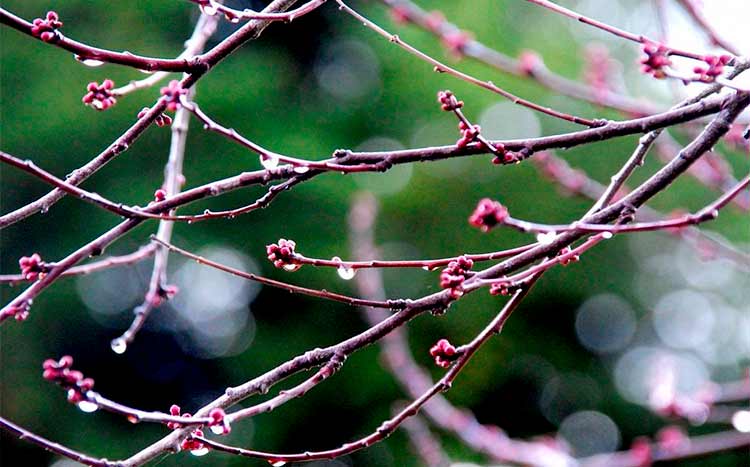Understanding tree anatomy is essential for individuals who work with or are involved with trees. It provides a thorough understanding of the different parts of a tree and how they depend on each other. A common area of confusion is recognizing the difference between limbs and branches.
A limb is a primary structural division of a tree, extending from the main stem and typically bearing foliage. Conversely, a branch is a wooden structure that emerges from either the stem or another branch, which may be equal to or greater than 4 full growing seasons2.
Whether you’re a professional in arboriculture or just someone who loves trees, understanding these basic parts can make a big difference.
What we cover
ToggleWhat is a branch?
A branch refers to the woody structure of the tree that grows from its trunk or stem. It’s, however, not part of the central trunk and can be a small division from another branch or outgrowth.
Its main function is to facilitate the transport of water and nutrients from the tree’s trunk to the leaves. Branches also act as key support and balance structures for the fruits, flowers, and leaves.
First-order branches – They connect to the trunk
Second-order branches – They are smaller branches that grow off first-order branches
Third-order branches – They grow off second-order branches
What is a limb?
A limb refers to a large or the primary division arising from the trunk of the tree. Most experts estimate it to be at least 4 inches bigger1 than a standard branch.
Its main functions are very similar to that of the branches, although it may sometimes take the role of the trunk in some trees.

Tree branch anatomy
There are numerous parts of a tree that all work together to ensure it remains healthy and fruitful. The most important parts include;
- Leaves – Leaves are the flattened green blade-like structures found on every tree. They are responsible for photosynthesis (food production) and transpiration (respiration) for the tree. Depending on their location, the leaves may develop adaptive features such as hairs, bristles, scales, etc.
- Crown – The tree crown refers to the upper visible part of the tree. It includes the tree branches, limbs, leaves, and flowers, and starts at the level of the first branch. The shape of the crown is different for most trees.
- Branches – Branches arise from the trunks or limbs of the tree forming part of the crown. They extend to have twigs that hold leaves, flowers, and fruits for some trees. The branches are important for the support and transport of water and nutrition from the trunk to the leaves.
- Trunk – The trunk is the center structure of the tree where branches and limbs grow from. It connects the tree from the roots allowing transport of food, nutrients, and water to all parts of the crown. Trunks also raise leaves above the ground to receive adequate sunlight. It’s made up of the outer bark, inner bark, cambium cell layer, sapwood, and heartwood.
- Roots – The roots are arguably the most important parts of the tree. The network of roots underground is responsible for the tree’s anchorage, absorption and uptake of water, minerals, and oxygen, transport to the trunk, growth, and storage. The root structures for trees also differ depending on the species.
Difference between branches and twigs
The biggest difference between branches and twigs is their size. Twigs are usually much smaller and grow from branches or even small bushes. They can be easily defined as the ‘smallest’ branches.
However, some trees may have larger twigs than the branches of another tree, i.e. twigs of an Oak tree may be bigger than that of a cherry tree.
Another key difference is that twigs have leaves growing directly from them. Branches, on the other hand, grow from the trunk and can be significantly large such as boughs or lateral branches.
What are the boughs of a tree?
Boughs refer to the large or primary branches of a tree. They grow directly from the trunk and hence can be interchangeably called limbs. Most people, including tree experts, however, avoid these terms and opt to use the word ‘‘branch’ in conversation.

Bough vs Branch
The main difference between a bough and a branch is size. Boughs are usually associated with branches that are bigger than the average-sized branch on a tree.
Another key difference is that boughs can only grow from the trunk. A branch, on the other hand, can grow from a bough or limb, trunk, or another branch.
In terms of functions, boughs and branches perform the same activities. They are crucial in supporting foliage development and may have some small branches and twigs growing from them.
Their shape and structure, like branches, also vary depending on the different types of trees.
What is the main branch of a tree called?
The main branch is known as the bough. It’s unique because of its large size and girth. Other subdivisions from the trunk are plainly known as branches, while the smaller divisions from the branch are called twigs.
Trunk vs branch
The trunk of the tree is the vertical wooden part that connects the crown to the roots. It’s also the part from which all branches grow and gain their water and nutrients.
Once the roots absorb water, oxygen, or nutrients, they are transported to the trunk, which then distributes them to the branches and boughs.
Branches finally deliver the nutrients to the twigs and leaves.
Stem vs Trunk
For trees, the stem refers to its trunk. However, this isn’t the case for all plants. This is because the term trunk is often associated with ‘woody’ plants.
In botany, the experts use the word stem when referring to plants that aren’t naturally woody. In essence, all trunks are stems, but not all stems are trunks.
Another difference between these two tree parts is that most stems can photosynthesize while most trunks can’t.
FAQ's
Most leaves grow on the twigs of the tree or shrubs, but there’s a small exception for some that can grow on branches and trunks.
They’re often called twigs. Sometimes they are known as small sticks.
A limb. Most limbs are estimated to be at least three or four inches bigger than a branch.
- MaddBeaverTreeExperts, (2022) The Difference Between a Tree Branch and a Limb <https://maddbeavertree.com/the-difference-between-a-tree-branch-and-a-limb/> Accessed: 28-01-2024
- Dr. Kim D. Coder, (2018) Tree Anatomy: DEFINING DEFINING TREES & FORMS <https://bugwoodcloud.org/resource/files/15277.pdf> Accessed: 28-01-2024



